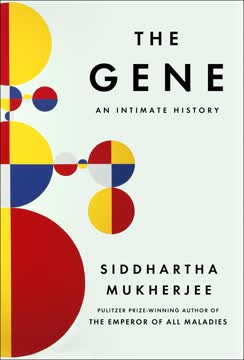Key Takeaways
1. Uncertainty is pervasive: Embrace Franklin's law
In this world nothing is certain but death and taxes.
Illusion of certainty. Many people believe that modern technologies like DNA testing, fingerprinting, and medical screening provide absolute certainty. However, this is an illusion. All these methods are subject to errors and uncertainties.
Franklin's law. Benjamin Franklin's famous quote reminds us that almost everything in life involves some degree of uncertainty. Recognizing this fact is the first step in making better decisions under uncertainty.
Consequences of ignoring uncertainty:
- False sense of security
- Overlooking potential errors or alternative explanations
- Making poor decisions based on incomplete information
2. Overcome innumeracy to make better decisions
The best technology is of little value if people do not comprehend it.
Statistical illiteracy. Many people, including professionals in fields like medicine and law, struggle with basic statistical concepts. This innumeracy can lead to poor decision-making and misinterpretation of important information.
Three types of innumeracy:
- Ignorance of risk: Not knowing relevant risks
- Miscommunication of risk: Inability to effectively communicate risks
- Clouded thinking: Difficulty drawing correct inferences from statistical information
Overcoming innumeracy:
- Recognize the importance of statistical thinking in everyday life
- Learn to use simple tools for understanding and communicating risks
- Practice interpreting statistical information in various contexts
3. Natural frequencies are more intuitive than probabilities
Eight out of every 1,000 women have breast cancer. Of these 8 women with breast cancer, 7 will have a positive mammogram. Of the remaining 992 women who don't have breast cancer, some 70 will still have a positive mammogram.
Natural frequencies vs. probabilities. Natural frequencies are easier for most people to understand and work with compared to probabilities. They represent how humans naturally encounter statistical information through experience.
Benefits of natural frequencies:
- Simplify complex calculations
- Make base rates more apparent
- Reduce confusion and errors in statistical reasoning
Example: In medical diagnosis, presenting test results using natural frequencies (e.g., "7 out of 77 women with positive mammograms have breast cancer") is more intuitive than using probabilities (e.g., "the probability of having breast cancer given a positive mammogram is 9%").
4. Relative vs. absolute risk: Context matters in risk communication
The relative risk reduction looks more impressive than the absolute risk reduction.
Misleading risk communication. Presenting risks in relative terms often leads to overestimation of benefits or harms. Absolute risk reduction provides a more accurate picture of the actual impact.
Example: A treatment that reduces the risk of a disease from 4 to 3 in 1,000 people can be described as:
- Relative risk reduction: 25% (sounds impressive)
- Absolute risk reduction: 0.1% (puts the benefit in perspective)
- Number needed to treat: 1,000 (clarifies how many people need treatment to benefit one person)
Best practices:
- Present both relative and absolute risks
- Use natural frequencies when possible
- Provide context to help people understand the magnitude of risks
5. Medical screening: Weigh benefits against potential harms
I hope very much that pressure is not put on women to attend [breast cancer screening]. The decision must be theirs, and a truthful account of the facts must be available to the public and the individual patient.
Balanced approach to screening. While medical screening can detect diseases early, it also comes with potential harms such as false positives, overdiagnosis, and unnecessary treatment.
Costs of breast cancer screening:
- False positives: Anxiety, additional tests, unnecessary biopsies
- Overdiagnosis: Treatment of slow-growing cancers that may never cause symptoms
- Radiation exposure: Small risk of radiation-induced cancer
Benefits of breast cancer screening:
- Potential reduction in breast cancer mortality (for women over 50)
- Earlier detection may lead to less invasive treatment options
Informed decision-making: Patients should be provided with clear, balanced information about both the benefits and risks of screening to make personal decisions based on their values and preferences.
6. DNA evidence: Understand the chain of inference
A reported match does not guarantee that the defendant is guilty of the crime or even that he or she is the source of the trace.
Chain of inference in DNA evidence:
- Reported match
- True match
- Source of trace
- Present at crime scene
- Guilt
Potential errors and uncertainties:
- Laboratory errors (false positives)
- Coincidental matches
- Contamination or transfer of DNA
- Presence at crime scene doesn't always imply guilt
Prosecutor's fallacy: Confusing the probability of a match given innocence with the probability of innocence given a match. This error can lead to overestimation of the strength of DNA evidence.
Best practices:
- Present DNA evidence using natural frequencies
- Clearly explain the chain of inference and potential uncertainties
- Consider alternative explanations for DNA matches
7. Risk perception: Recognize common biases and misunderstandings
What John Q. Public most fears is not always what threatens him most.
Factors influencing risk perception:
- Preparedness: Evolutionary predisposition to fear certain threats
- Disasters: Greater fear of events that can cause many deaths at once
- Unknown hazards: Fear of new and unfamiliar risks
Common misperceptions:
- Overestimating risks of rare but dramatic events (e.g., plane crashes)
- Underestimating risks of common but less dramatic events (e.g., car accidents)
- Focusing on relative risks without considering absolute risks
Improving risk perception:
- Seek out accurate statistical information
- Consider both the likelihood and potential impact of risks
- Be aware of how risks are framed and communicated
8. Informed consent requires clear communication of risks and benefits
The silent world between doctor and patient is one reason: Patients often do not know what questions to ask.
Barriers to informed consent:
- Illusion of certainty: Presenting treatments as certain rather than acknowledging uncertainties
- Innumeracy: Difficulty understanding and communicating statistical information
- Time constraints: Limited time for in-depth discussions
- Power imbalance: Patients may feel uncomfortable questioning authority
Improving informed consent:
- Use clear, understandable language to explain risks and benefits
- Present information using natural frequencies and absolute risks
- Encourage patients to ask questions and express concerns
- Provide balanced information about alternative treatments
Shared decision-making: Involve patients in the decision-making process by considering their values, preferences, and goals alongside medical evidence.
9. Transform innumeracy into insight through proper representations
Solving a problem simply means representing it so as to make the solution transparent.
Power of representation. The way information is presented can significantly impact understanding and decision-making. Proper representations can turn innumeracy into insight.
Effective representations:
- Natural frequencies instead of probabilities
- Absolute risks instead of relative risks
- Visual aids (e.g., frequency trees, icon arrays)
- Concrete examples and analogies
Benefits of clear representations:
- Facilitate understanding of complex statistical concepts
- Reduce errors in reasoning and decision-making
- Empower individuals to make informed choices
Education and communication: Teaching statistical thinking using intuitive representations can improve numeracy across various fields, including medicine, law, and public policy.
Last updated:
FAQ
What's Calculated Risks: How to Know When Numbers Deceive You about?
- Exploration of Uncertainty: The book delves into how humans perceive and handle uncertainty and risk, especially in medical and legal contexts. It stresses the need to understand statistical information for informed decision-making.
- Real-Life Illustrations: Gerd Gigerenzer uses examples like HIV testing and breast cancer screening to show how miscommunication of risks can have serious consequences, highlighting the gap between statistical data and public understanding.
- Practical Tools: The author introduces tools such as using natural frequencies instead of probabilities to help individuals better comprehend risks and make informed choices.
Why should I read Calculated Risks by Gerd Gigerenzer?
- Improve Decision-Making: The book enhances your ability to understand and communicate risks, crucial in today's data-driven world, equipping you to navigate uncertainties effectively.
- Awareness of Miscommunication: It highlights how professionals often miscommunicate risks, leading to unnecessary fear and anxiety, and helps you advocate for clearer communication in healthcare and legal contexts.
- Empowerment Through Knowledge: By learning about statistical principles, readers can feel more empowered to question and understand information presented to them in various settings.
What are the key takeaways of Calculated Risks?
- Understanding Uncertainty: Recognizing uncertainty as a fundamental aspect of life can help individuals make better decisions, as emphasized by Gigerenzer.
- Natural Frequencies vs. Probabilities: The book advocates using natural frequencies to communicate risks more effectively, clarifying actual risks involved.
- Illusion of Certainty: Gigerenzer discusses how the illusion of certainty can lead to poor decision-making, encouraging readers to embrace uncertainty.
What are the best quotes from Calculated Risks and what do they mean?
- “Dare to know!”: This quote encourages individuals to seek knowledge and understanding of risks, promoting critical thinking and informed decision-making.
- “Nothing is certain but death and taxes.”: It serves as a reminder of life's inherent uncertainty, setting the tone for discussions on navigating uncertainties.
- “The best technology is of little value if people do not comprehend it.”: This highlights the importance of understanding tools and technologies, especially in healthcare, underscoring the need for clear communication of risks.
How does Gerd Gigerenzer define "innumeracy" in Calculated Risks?
- Definition of Innumeracy: Gigerenzer defines it as the inability to reason appropriately about uncertainties and risks, particularly in statistical contexts, reflecting a lack of understanding of basic mathematical concepts.
- Forms of Innumeracy: The book identifies forms like ignorance of risk, miscommunication of risk, and clouded thinking, each contributing to poor decision-making.
- Impact on Decision-Making: Innumeracy can lead to significant consequences, such as unnecessary medical procedures or flawed legal judgments, emphasizing the need for education and tools to combat this issue.
What is the significance of using natural frequencies instead of probabilities in Calculated Risks?
- Clarity in Communication: Natural frequencies provide a clearer representation of risks, making it easier for individuals to understand statistical data's actual implications.
- Reduction of Miscommunication: Using natural frequencies minimizes potential miscommunication by specifying the reference class clearly, as illustrated in the Prozac example.
- Facilitating Better Inferences: Gigerenzer argues that natural frequencies help individuals make better inferences about risks, aligning more closely with how humans naturally process information.
How does Calculated Risks address the issue of informed consent?
- Importance of Informed Consent: The book emphasizes that informed consent is crucial in medical and legal contexts, requiring clear communication of uncertainties.
- Challenges in Achieving Informed Consent: Gigerenzer discusses barriers like the illusion of certainty and professionals withholding information, highlighting the need for transparency.
- Recommendations for Improvement: The author suggests educating both patients and professionals about risks and decision-making processes, using natural frequencies and comprehensive information.
What role do experts play in the miscommunication of risks, according to Calculated Risks?
- Expert Misunderstanding: Gigerenzer points out that even experts can misinterpret statistical information, leading to miscommunication of risks.
- Influence on Public Perception: Experts' miscommunication can significantly impact public perception and decision-making, as seen in HIV testing and breast cancer screening cases.
- Need for Better Training: The book advocates for better training of experts in statistical reasoning and communication to foster clearer communication and better decision-making.
How does Gerd Gigerenzer illustrate the concept of the "prosecutor's fallacy" in Calculated Risks?
- Definition of Prosecutor's Fallacy: It occurs when the probability of a match is incorrectly equated with the probability of guilt, leading to wrongful convictions.
- Case Examples: Gigerenzer uses the case of People v. Collins to illustrate this fallacy, where statistical probabilities were misapplied, leading to a reversed conviction.
- Implications for Justice: The book highlights the dangers of this fallacy in the legal system, emphasizing the need for clearer statistical communication to prevent similar errors.
What are the psychological impacts of miscommunication of risks as discussed in Calculated Risks?
- Fear and Anxiety: Miscommunication of risks can lead to heightened fear and anxiety, as seen in false HIV test results, causing significant emotional distress.
- Impact on Decision-Making: The psychological toll can affect decision-making processes, leading to choices based on fear rather than informed understanding.
- Need for Supportive Counseling: Gigerenzer emphasizes supportive counseling that addresses both emotional and informational needs, helping mitigate anxiety and empower informed decisions.
What are the common misconceptions about breast cancer screening discussed in Calculated Risks?
- False Positives: Many women experience false positive results in mammography screening, leading to unnecessary anxiety and procedures.
- Relative vs. Absolute Risk: The book explains the difference, emphasizing that absolute risk reduction provides a clearer picture of screening benefits.
- Mortality Reduction: Gigerenzer discusses the misconception that early detection always reduces mortality, pointing out that total mortality was the same in screening and control groups.
What role does the media play in shaping public perception of risks according to Calculated Risks?
- Influence of Reporting: Media coverage can significantly impact public understanding of risks, often emphasizing sensational stories over statistical realities.
- Miscommunication of Statistics: The media often presents statistics in misleading ways, such as focusing on relative risks without context, creating an illusion of certainty.
- Responsibility of Journalists: Gigerenzer calls for greater responsibility among journalists to report risks accurately and clearly, fostering a more informed public.
Review Summary
Calculated Risks receives mostly positive reviews for its insightful exploration of statistical reasoning and risk communication. Readers appreciate Gigerenzer's clear explanations of complex concepts and the book's real-world examples from medicine and law. Many find it eye-opening and valuable for understanding probability and uncertainty. Some criticize the book for being repetitive or dense, but overall, reviewers praise its importance in helping people interpret statistics and make informed decisions. The book's emphasis on using natural frequencies to explain risks is highlighted as particularly useful.
Similar Books










Download PDF
Download EPUB
.epub digital book format is ideal for reading ebooks on phones, tablets, and e-readers.







